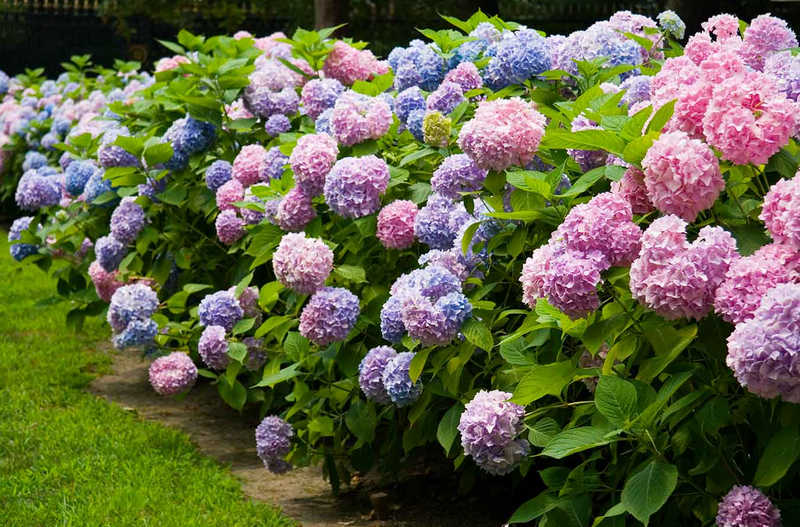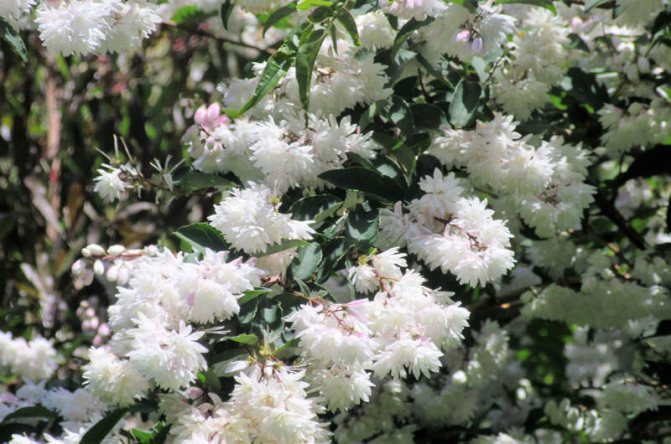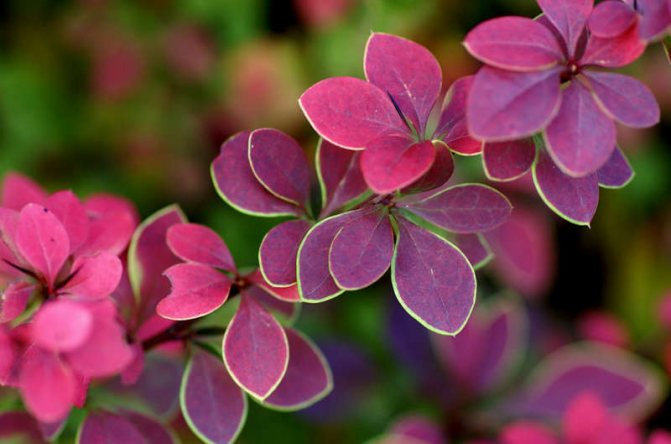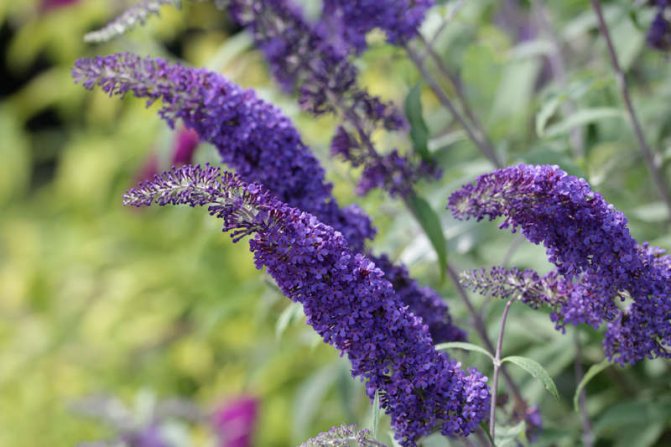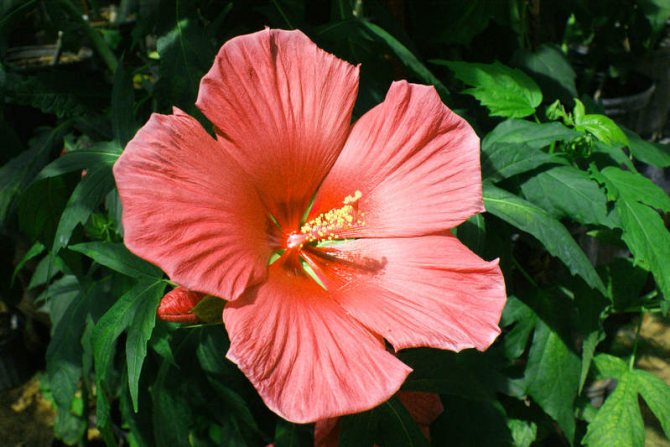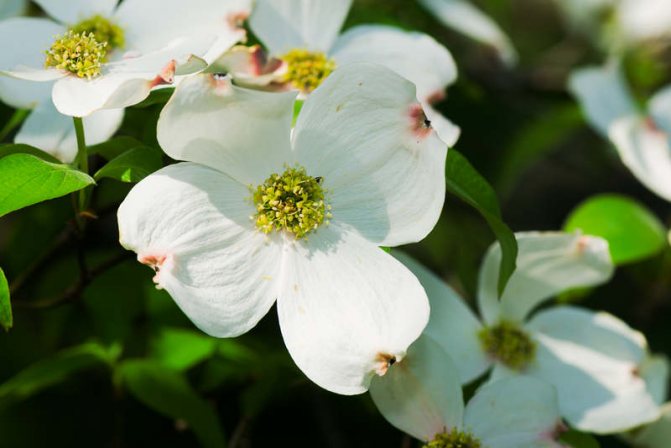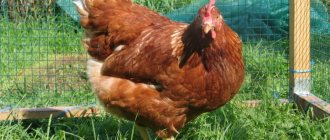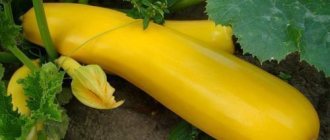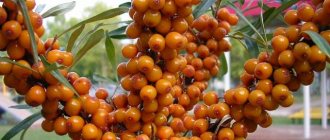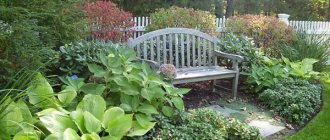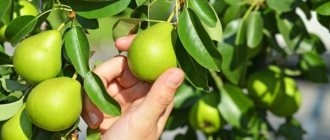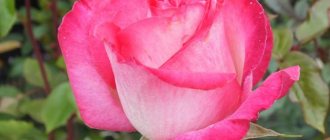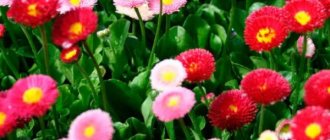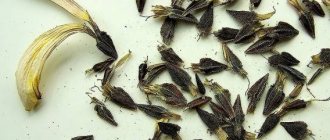Classic orchard
Summer residents often complain that they do not have enough space on the site to plant apple trees, pears, plums, cherries, currants, raspberries. Cherry would still be nice to attach cherry plum. And the apricot is also needed. Eh, it would be 20 acres of land ... Then everything would fit! Did you have such thoughts? All this is quite possible to grow on 6 acres, if you know some tricks.
But first, let's decide what we need.
So, for a family of 4 people is quite enough: 4 apple trees (1 summer, 2 autumn and 1 winter) 2 pears (autumn and winter) 2 plums 2 cherry plums 1 apricot 4 cherries 1 cherry 4 black currants 1 red currant 1 white currant 2 gooseberries 20 raspberry bushes.
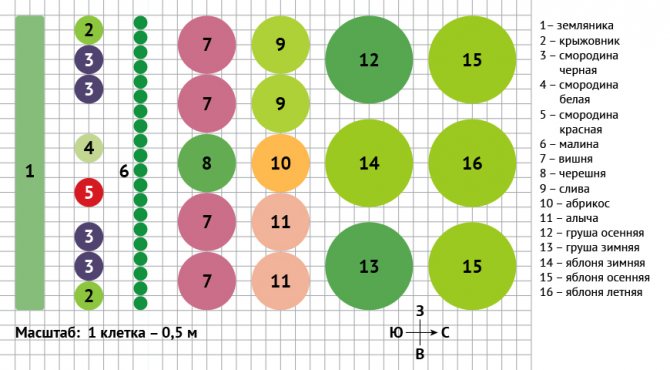
Classic garden
Standard plot - 6 acres. The house is approximately 50 m2. On the remaining 5.5 acres, you need to fit a garden, a vegetable garden and a flower garden. We will allocate a little less for flowers - 1 hundred square meters will be enough for them. We will give 2 hundred parts for the garden - this is quite enough even to make supplies for the winter.
We will place trees and shrubs on the free 2.5 acres.
The advantages of a classic garden
A classic garden is usually laid out in even rows. We did the same. As a result, everything turned out symmetrically, neatly, with wide passages between the trees. They, as expected by law, are located at a distance of 4 m from the fence - on the north and west sides. You can plant trees and shrubs close to the fence, but taking into account the height and so that they do not shade each other. On the south side, we have strawberries - the beds are planned half a meter from the border of the site so that there is a passage (for example, to paint the fence).
It is very convenient to look after such a garden. It is ideally blown, which means there will be fewer diseases and pests. It is perfectly illuminated, and the more light, the higher the yield, since all fruit crops love an abundance of sunlight.
Which varieties to choose
As you can see, there are not many trees and shrubs in this garden. And in order to feed the whole family, it is necessary to choose the most productive varieties.
We offer:
Apple trees
Summer varieties (the yield per plant is indicated in brackets): Yandykovskoe (200 kg), Luch (160-190 kg), Bagaevsky Malt (160 kg).
Autumn varieties: Oryol striped (up to 430 kg), Anis scarlet (200-300 kg), Ural liquid (250 kg), Borovinka (150-200 kg), Baganenok (150-160 kg), Bashkir emerald (up to 150 kg), Orlovsky pioneer (up to 150), Autumn joy (up to 150 kg), Land (130 kg) and Veselovka (up to 110 kg).
Winter varieties: Jonathan (up to 490 kg), Welsey (up to 270 kg), Anise striped (250–300 kg), Kazachka Kuban (250–300 kg), Winter MOSVIR (200–300 kg), Renet golden Kursk (200 kg), Dagestanskoe winter (up to 180 kg), Nymph (130 kg), Pervenets Rtischeva (130 kg), Renet Kubanskoe (130 kg), Prikubanskoe (130 kg), Sovkhoznoe (130 kg) and Antonovka ordinary (70-120 kg, but in separate years it can be 500 and even 1000 kg per tree!), Renet champagne (up to 120 kg), Bratchud (up to 120 kg), Bryanskoe (up to 115 kg).
The average yield of apple trees is 30-50 kg per tree.
Pears
Autumn varieties: Bere Russian (up to 200 kg), Marble (up to 130 kg), Skoroplodnaya (100-130 kg), Lyubina (120 kg), Oktyabrskaya (120 kg), Malyaevskaya late (100 kg).
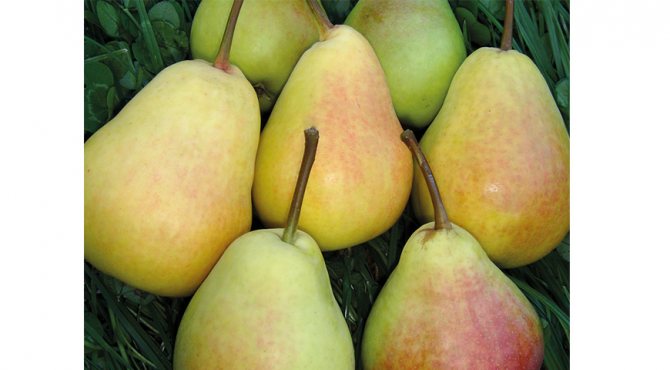

Pear Marble
Winter varieties: Kieffer (up to 300 kg), Yuryevskaya (110 kg), Gimrinskaya (110, but in some years it is 800 kg, and sometimes 3,500 kg!).
The average yield of most other pear varieties is only 30-50 kg.
Plum
Volgograd (150 kg), Eurasia (50-100 kg), Dream (70 kg), Nika (up to 70 kg), Bogatyrskaya (50-70 kg), Zhiguli (up to 70 kg), Prikubanskaya (60-70 kg), Krasnodar (65 kg), Viola (up to 60 kg), Soviet Renklod (up to 60 kg), Andreevskaya (50–55 kg).
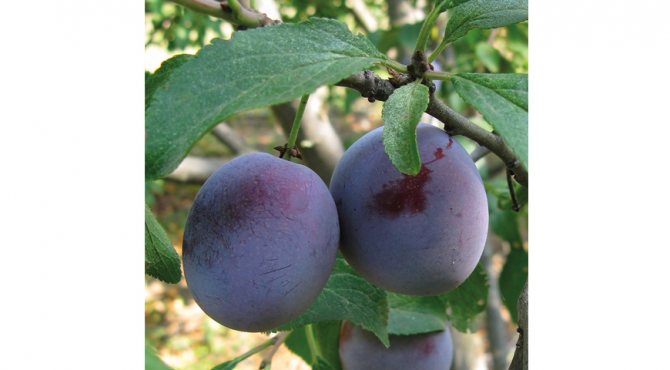

Plum Renklode Soviet
On average, plums produce 15–20 kg of fruit.
Cherry plum
Abundant (up to 100 kg), Pionerka (60-70 kg), Gift to St. Petersburg (up to 60 kg), Pearl (50 kg), Globus (up to 50 kg), Mara (up to 50 kg), Huck (up to 40 kg ), Traveler (up to 40 kg), Kuban comet (35–40 kg), Tent (35 kg).
The average yield of other varieties of cherry plum ranges from 10-15 kg per tree.
Sweet cherry
Dybera black (up to 170 kg), Bryanochka (up to 150 kg), Tyutchevka (135-140 kg), Drogana yellow (up to 110 kg), Odrinka (up to 110 kg), Julia (up to 110 kg), Gronkavaya (100 kg) , Rechitsa (up to 75 kg), Iput (up to 70 kg), Early pink (up to 70 kg), Pink pearls (up to 70 kg), Kid (up to 65 kg).
Most varieties intended for the northern regions yield no more than 30 kg.
Apricots
Northern Triumph (up to 65 kg), Kuibyshev Jubilee (40-50 kg), Samara (40-50 kg), Northern Lights (up to 50 kg), Gritikaz (up to 45 kg), Zhiguli Pearl (up to 45 kg), Petr Komarov (up to 45 kg), Sayansky (up to 45 kg), Gorny Abakan (up to 40 kg).
Other frost-resistant apricots usually yield about 20 kg.
Gooseberry
Hinnonmaen punainen (up to 13 kg), Beryl (up to 10 kg), Ural pink (up to 9.6 kg), Bright (up to 7.8 kg), Shershnevsky (up to 7.6 kg), Vladil (up to 7.5 kg ), Spring (up to 7.5 kg), Chelyabinsk green (up to 7.1 kg), Eridan (up to 7.1 kg), Ural grapes (up to 7 kg), Cooperator (up to 6.9 kg), Red large ( up to 6.5 kg), White nights (up to 6.2 kg), Candy (up to 6.2 kg), Harlequin (up to 6 kg), Senator (up to 6 kg).
The yield of many other varieties usually does not exceed 2–4 kg.
Black currant
Ksyusha (up to 13.8 kg), Nyura (up to 7 kg), Ilyina's Gift (up to 6.6 kg), Imandra 2 (6 kg), Harmony (up to 6 kg), Kupalinka (up to 6 kg), Lama (up to 5.9 kg), Sudarushka (up to 5.9 kg), Pygmy (up to 5.7 kg), Hera (up to 5.5 kg), Natasha (up to 5.2 kg), Venus (up to 5.1 kg) , Reform (up to 5.1 kg), Amgun (4–4.5 kg), Leningrad giant (up to 4.5 kg), Nika (up to 4.5 kg), In memory of Shukshin (up to 4.5 kg), Rita (up to 4.5 kg), Dashkovskaya (up to 4.1 kg), The Little Prince (up to 4.1 kg), In memory of Potapenko (up to 4.1 kg), Daughter (4 kg), Moscow (4 kg), Argazinskaya (up to 4 kg), Volodinka (up to 4 kg), Ojebin (up to 4 kg), Gift to Kuzior (up to 4 kg), Gift for October (up to 4 kg), Sweet-fruited (up to 4 kg), Overture (up to 4 kg).
The rest give, as a rule, no more than 2 kg.
Red currants
Ural beauty (up to 15.5 kg), Commemorative (up to 10.2 kg), Dream (up to 7 kg), Erstling aus Vierlanden (6-7 kg), Jonker van Tets (6.5 kg), Nadezhda (6, 5 kg), Ural Lights (6.4 kg), Serpentine (6.4 kg), Chulkovskaya (up to 6 kg), Svetlana (5.5 kg), Viksne (5 kg), Scarlet Dawn (up to 5 kg), Vika (up to 5 kg), Zero (up to 5 kg), Ilyinka (up to 5 kg), Tatiana (5 kg), Ural souvenir (up to 5 kg).
White currant
Belyana (up to 18 kg), Yuterborgskaya (7–8 kg), Ural White (up to 6.1 kg), White Fairy (5.2 kg), Smolyaninovskaya White (5.2 kg).
Other varieties of red and white currants usually yield about 2 kg of berries per bush.
Raspberries
Nizhny Novgorod (183 kg per one hundred square meters), Ruby necklace (158 kg), Orange miracle (155 kg), Elegant (140 kg), Eurasia (134 kg), Bryansk divo (131 kg), Firebird (131 kg), Illusion (130 kg), Vera (up to 129 kg), Golden Autumn (126 kg), Bell (up to 120 kg), Ruby (up to 120 kg), Apricot (100-120 kg), Augustine (117 kg), Indian Summer 2 (115 kg).
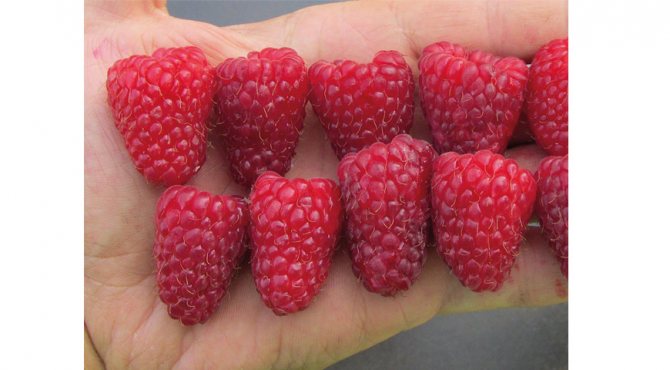

Raspberry remontant Firebird
The yield of other varieties is usually about 50 kg per hundred square meters.
Strawberry
First grader (up to 240 kg per hundred square meters), Desna (up to 210 kg), Pocahontas (up to 200 kg), Talisman (up to 200 kg), Jemil (150-200 kg), Zarya (up to 195 kg), Rusalovka (up to 170 kg) ), Junia smiles (up to 150 kg), Festival chamomile (up to 150 kg), Holiday (up to 150 kg), Festivalnaya (130–140 kg), Purpurova's daughter (120–140 kg), Beauty (up to 130 kg).
Most other varieties give no more than about 70 kg per hundred square meters.
What should grow under fruit trees
It is best to sow a lawn in an orchard. It gives 6 advantages at once:
1. The quality of the soil is constantly improving - the roots of plants create a special structure of the soil: loose, porous. As a result, moisture and air penetrates it better.
2. Trees are fed. Grass dying every autumn gradually decomposes, and this is an additional organic matter for the tree.
3. Plants winter better. The lawn under trees and shrubs provides additional protection for the roots from frost.
4. Roots do not overheat in summer. The grass perfectly protects them from the scorching sun.
5. You do not have to do unnecessary, moreover, laborious work. Digging and weeding are the most unpleasant and tedious activities.
6. An additional place for the recreation area will appear. When there is green grass under the tree, you can put a bench or a table there. It will make a great shady spot where you can hide in the summer heat!
But if you still want to use the land to the fullest, you can plant flowers and even vegetables in the garden.
Determination of the soil on the site
Depending on the mechanical composition, soils are distinguished: clayey, silty loam, sandy loam, sandy loam, sandy, etc.
Light soils generally contain less nutrients than heavy soils. The effect of mineral fertilizers is enhanced on lighter soils.
Soil analysis is done by agrochemical laboratories at the MTS. On a personal plot, the mechanical composition of the soil can be roughly determined using the table below.
Soil determination table
| Soil | The sensation of rubbing the soil between the toes and the action of a knife | Magnifying glass | Rolling the cord out of moistened soil |
| Clayey | Fine homogeneous powder. The coarse sand grains do not scratch the skin of the fingers. No crunch of sand particles is heard when cut with a penknife | No large sand grains | Give a long cord |
| Silty loams (by the amount of silt are divided into light, medium and heavy) | When cut with a knife, they give a flat surface | Small amount of sand | They don't give a long cord |
| Sandy loam (sand content can be light, medium and heavy) | When rubbing, a large amount of sand is clearly noticeable. The knife makes a characteristic creaking sound | — | They give a very fragile cord (crumbles) |
| Sandy loam | Sandy particles with a small admixture of clayey predominate. | The cord cannot be rolled up | |
| Sandy | Consist almost exclusively of sand grains |
Site preparation
Usually fruit trees are planted in pits, but the garden develops better if the soil was completely cultivated (dug up) to a depth of 40-60 cm before planting. Podzolic soils are cultivated to a shallower depth. For spring planting, pits are prepared in the fall, and for autumn - in the spring, or in extreme cases, no later than 20-30 days before planting.
Pits are dug round with sheer walls.
Fertilization during the preparation of the site is described below.
Planting pit sizes
| Breeds | Diameter (in m) | Depth (in m) |
| Apple tree, pear Plum, cherry | 1-1,25 0,7-0,8 | 0,7 0,4-0,6 |
Land planning for the placement of fruit trees
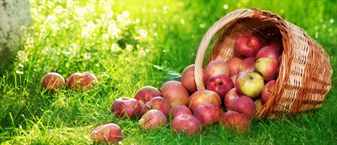

Apples collected in a basket
The orchard on the site can be central or small. This largely depends on the area of the site and on the wishes of the owners. So that in the future the garden will only bring benefit and pleasure, before breaking it down, you need to draw up a planting plan and select suitable plants.
The terrain itself will tell you how to make the right garden. In the lowlands, trees will not survive the harsh winter, and in spring they will suffer during flowering due to recurrent frosts. On a high hill, the delicate plants will be sore from the winds.
Ideal for fruit crops is the southern or southwestern slope, well warmed by the sun. Sensitive plants are planted in the center of the garden, while larger, more resilient plants are planted around the perimeter.
You will be interested in: How to implement eco-design of a garden with your own hands, the choice of plants and herbs
Tree planting
Planting trees is a demanding job. The success of plant survival, their further growth and fruiting largely depends on the correct planting.
Many amateur gardeners are fond of planting 5-10-year-old mature trees. Of course, this can be done if an adult tree is transplanted with a clod of earth weighing 3-4 tons. Transplanting such trees requires a lot of labor and money. And not everyone can do it. If an adult tree is transplanted without a coma with short-cut roots, there will be little sense from this; it will not develop normally for a number of years and will not outstrip trees planted with 2-3-year-old seedlings produced by fruit nurseries.
The younger the seedling, the easier it is to plant and the sooner and better it takes root.
In the gardens, along with vigorous ones, dwarf fruit trees are also planted. Dwarf trees are those that are grafted on rootstocks that have weak growth.Trees of the same variety, for example, apple trees, grafted on vigorous and low-growing rootstocks, conventionally called dwarf ones, differ both in strength of growth and in other characteristics.
Unlike an apple tree grafted on a vigorous rootstock that grows for 70–80 years, dwarf trees only grow for 20–25 years. But dwarf trees have their advantages. They begin to bear fruit in the 3-4th year (some varieties even earlier), and vigorous ones - in the 6-12th year.
Dwarf trees are productive, the fruits on them are larger and better colored. Such trees give more yield per unit area than vigorous ones.
Dwarf trees are placed on a plot at a distance of 3x3 m, and therefore twice as many dwarf trees are placed on the same area than vigorous ones, and the total yield is also greater.
It is advisable to plant dwarf trees in rows of plantings of vigorous ones, one tree at a time between vigorous apple or pear trees.
Dwarf seedlings are grown by grafting varieties on low-growing rootstocks - paradizka (paradise apple tree) and dusen. Plants grafted on paradis are more stunted than grafted on dusen.
Planting and caring for dwarf trees is almost the same as planting and caring for vigorous ones.
Landing dates.
In the regions of the central zone of the USSR, the best time for planting is early spring, before the buds of the seedlings.
Autumn planting also gives good results, but in this case, planting should be done in early October (2-3 weeks before the onset of stable frosts).
Preparing seedlings for planting.
The roots of the seedlings are carefully examined and parts of the diseased, dried, broken and damaged roots are cut out with a sharp garden knife when the plants are excavated from the nursery. The ends of healthy roots are trimmed (trimmed) very little. The longer the roots and the better they are branched, the better the seedlings take root and develop in the future.
Fig. 5. Preparing the seedling for planting. Dashes show the places where branches and roots were cut.
Each of the branches of the seedling crown is shortened by 1/3 of the length. When shortening the branches, they should be pruned into the so-called external (external) bud (see Fig. 1). In this case, side shoots will develop to the sides and will not thicken the crown of the tree. Branches can be pruned before and after planting.
For the correct planting of seedlings, a planting board is needed. It is made 2.0 m long, 12-15 cm wide and 2-3 cm thick.In the center of the board there should be a triangular cutout 4 cm deep. The same cutouts are made at the ends of the board, 75 cm away from the middle cutout (Fig. 6).
Fig. 6. Landing board
The planting of a fruit tree is shown in Figure 7.
Fig. 7. Planting a fruit tree: 1 - a planting board with a middle cut is applied to the stake and a short peg is installed to each of the extreme cutouts; 2 - they take away the boarding board, leaving the pegs in place, and draw a circle around the stake, which determines the size of the width of the pit; 3 - dig a hole to the desired depth, folding the top and bottom layers of soil separately along the sides of the hole; 4 - the landing board is applied to the peg with end cutouts and a pointed stake is driven into the bottom of the pit at the middle cutout; 5 - the hole is covered with the top layer of soil thrown out during the digging of the hole, forming a mound around the stake, which is tightly trampled down by the foot; 6 - the seedling is lowered into the pit, spreading its roots evenly over the surface of the mound, the roots are covered with nutritious soil, which is gradually compacted, filling the voids formed around the roots (the root collar of the seedling should be 5-7 cm above the soil surface); 7 - after filling the hole, the seedling is slightly tied to the stake, and after the soil settles in the hole, a tighter garter is made a second time. The height of the stake should not be higher than the first lower branch of the seedling; 8 - arrange a hole (bowl), water each tree, and when water is absorbed into the soil, the surface of the hole is mulched (shaded) with a layer of manure, humus, peat, etc.
Frost-resistant perennial shrubs
Winter-hardy perennial shrubs include:
- Tree peony. It is a semi-spherical deciduous shrub. The leaves are openwork ornamental, the flowers are simple, double and semi-double, which are crimson, pink, yellow, purple and white. The plant tolerates frost well, but it must be covered for the winter.
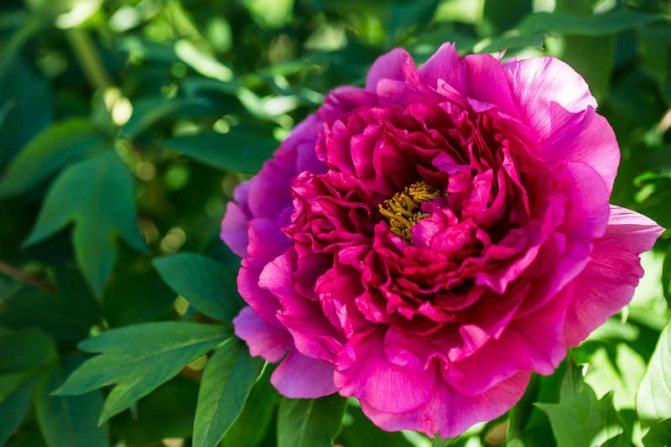

- Medlar. He loves hot summers and frost-free winters, but frost-resistant varieties of this perennial shrub have been bred. Large, whole green leaves begin to turn red in the fall. In May it blooms with white flowers. Ripe fruits have a hard, sour and tart pulp, which after a while becomes sweet and soft. This red-leaved plant grows well in temperate climates.
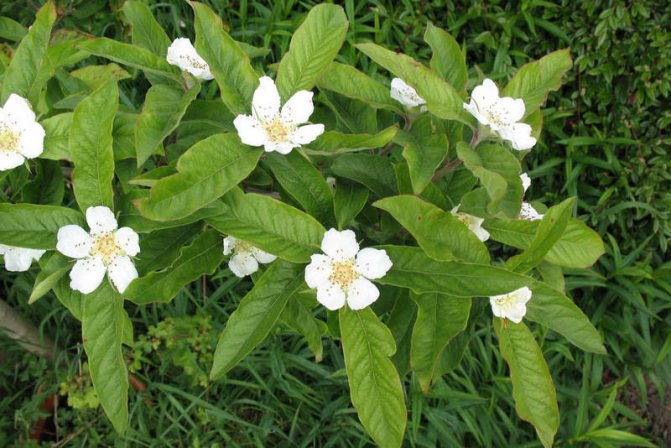

- Bubbles. The spreading bush is represented by drooping branches, forming a lush spherical crown. It can reach a height of up to 3 meters. It blooms luxuriantly in early summer with white or pink flowers with red stamens. The viburnum bicarp belongs to perennial shrubs from which they often create a hedge.


- Yoshta. It is a hybrid of black currant and gooseberry. Glossy leaves of large size, do not fall off until winter. Large flowers of a rich color.
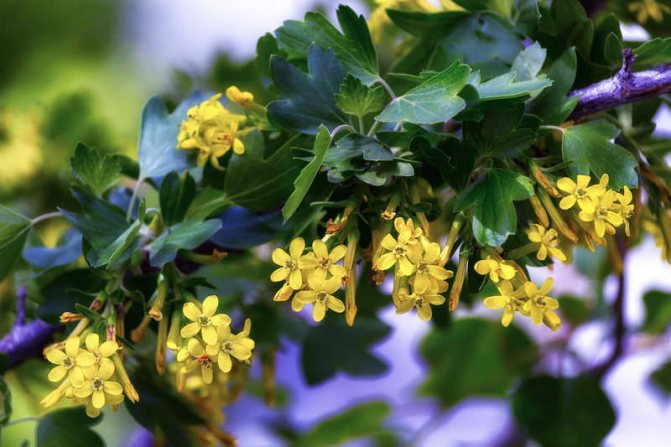

- Forsythia. The flowers of this perennial shrub are bell-shaped, rich yellow in color. Leaves are oval, with a serrated edge, reaching a length of 15 cm. Differs in early flowering.
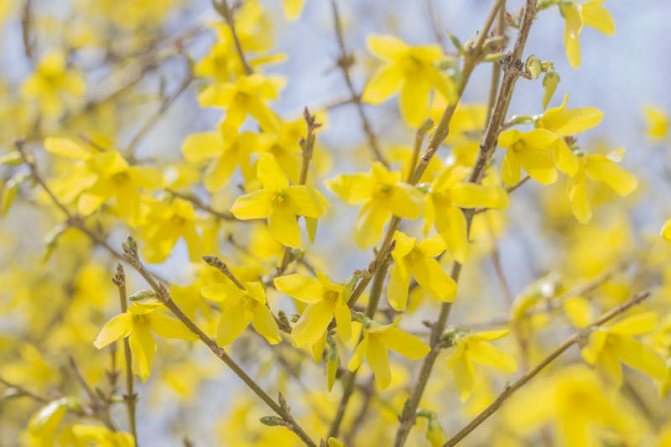

- Common heather. Possesses high decorative qualities. It is a highly branching perennial shrub with small leaves that seem to be rolled into a tube. The fragrant flowers resemble bells and are lilac-pink in color.
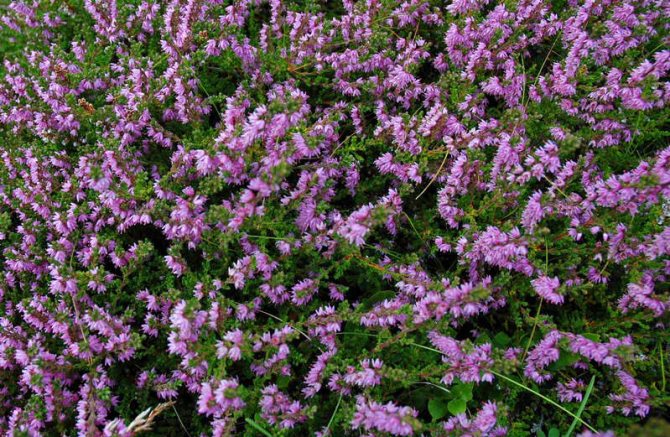

Heather can grow on any soil, provided there is sufficient illumination, while its height does not exceed 60 cm. - Weigela. The leaves of this perennial shrub are bright green or variegated, tubular buds are collected in inflorescences. The color of the petals is different: from a pale white shade to rich purple variations. Some varieties have brown, purple-red and dark buds. The plant is often used to create alpine slides and hedges.
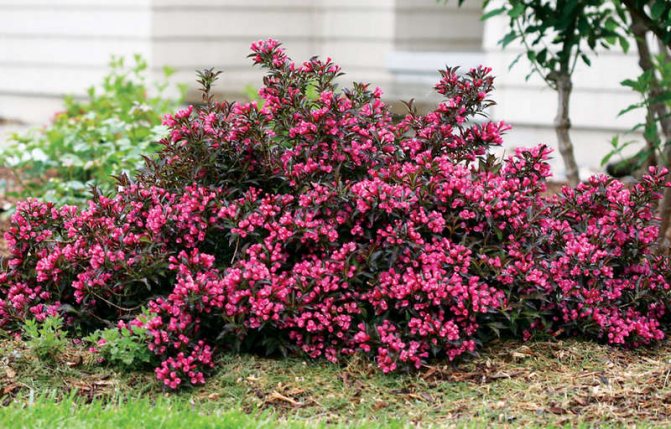

- Fieldfare mountain ash-leaved. It can create spectacular thickets due to the large number of root shoots. Pyramidal inflorescences consist of a large number of small flowers of white or cream color. Used to create single and group landings.
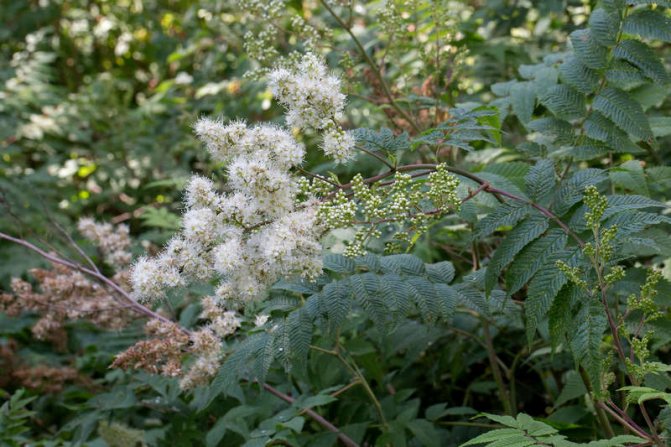

- Snowberry. This perennial shrub is often used to create hedges. Its snow-white fruits continue to stick to the branches even in winter.
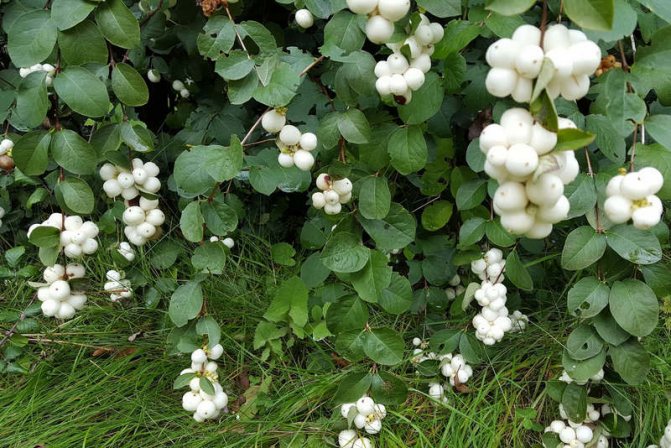

- Lemongrass Chinese. It is a deciduous perennial shrub that can grow up to 15 m in height. It is used in landscaping to form a "green wall" with its leaves on gazebos, railings and arches.
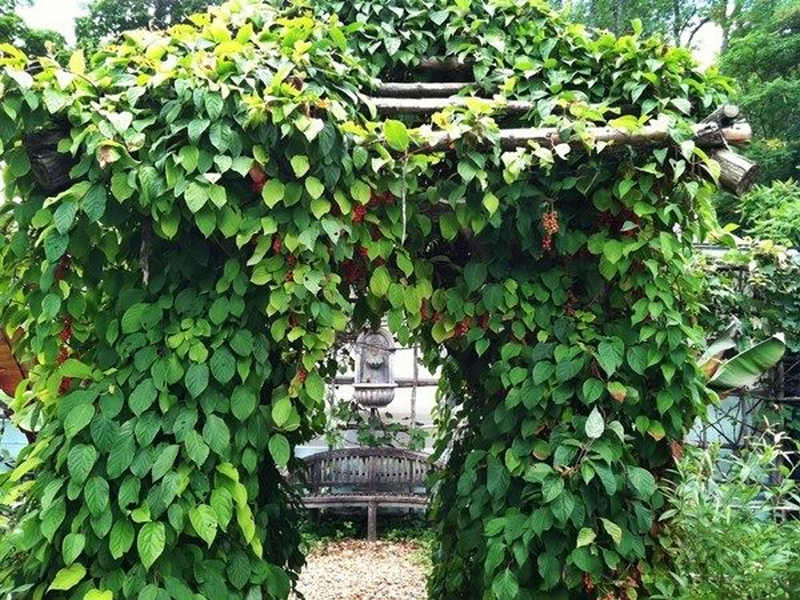

The plant is planted in garden plots not only for decoration, but also for fruiting. Schisandra fruits are useful for strengthening the immune system and stimulating tissue regeneration. Leaves and shoots have a characteristic aroma of lemon peel, which is why the plant received the appropriate name. The blossoming flowers are first white, and then they acquire a pink tone. The plant is quite cold-hardy and shade-tolerant.
Japanese spiraea belongs to perennial ornamental shrubs that bloom all summer and, in addition, is also frost-resistant. A plant with beautiful flowers and decorative leaves up to 1.5 meters high. It blooms from June to September and has flowers of a pale pink or dark pink hue. Japanese spirea tolerates various types of soil, but requires full sun exposure. The plant is easy to grow, so it is recommended for novice gardeners.
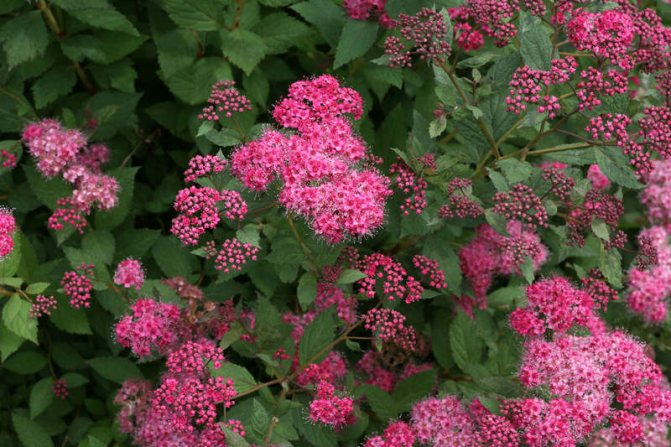

Shrub cinquefoil (shrub cinquefoil) can also be attributed to perennials blooming all summer. This is a lush perennial shrub, the delicate shoots of which form a lacy crown in the form of a hemisphere or ball. Carved leaves, divided into 7 parts, give a curly look. Their color is greenish with a silvery sheen. The buds consist of 5 rounded petals, 30 stamens are located in the center.
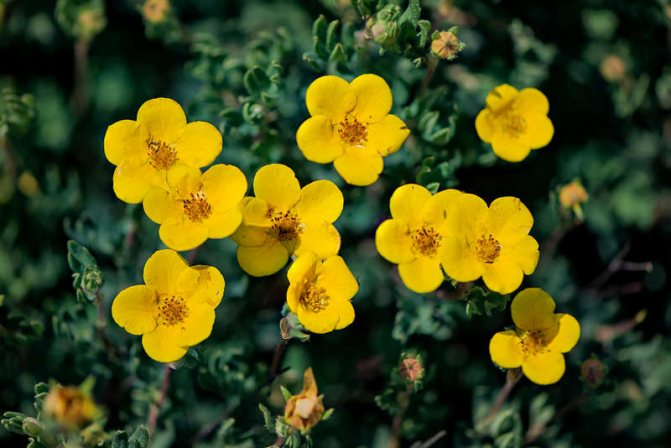

This perennial blooms from mid-May to October. Shrub cinquefoil is rather unpretentious to growing conditions. The plant reaches a meter in height and develops well in well-lit sunny areas. The shrub is often used as a border to decorate the boundaries of sites, create low hedges.
Shrubs with decorative leaves
- Loch is silvery. The plant has silvery foliage, which does not lose its attractiveness in winter. This perennial shrub can withstand severe frosts and is easy to grow.
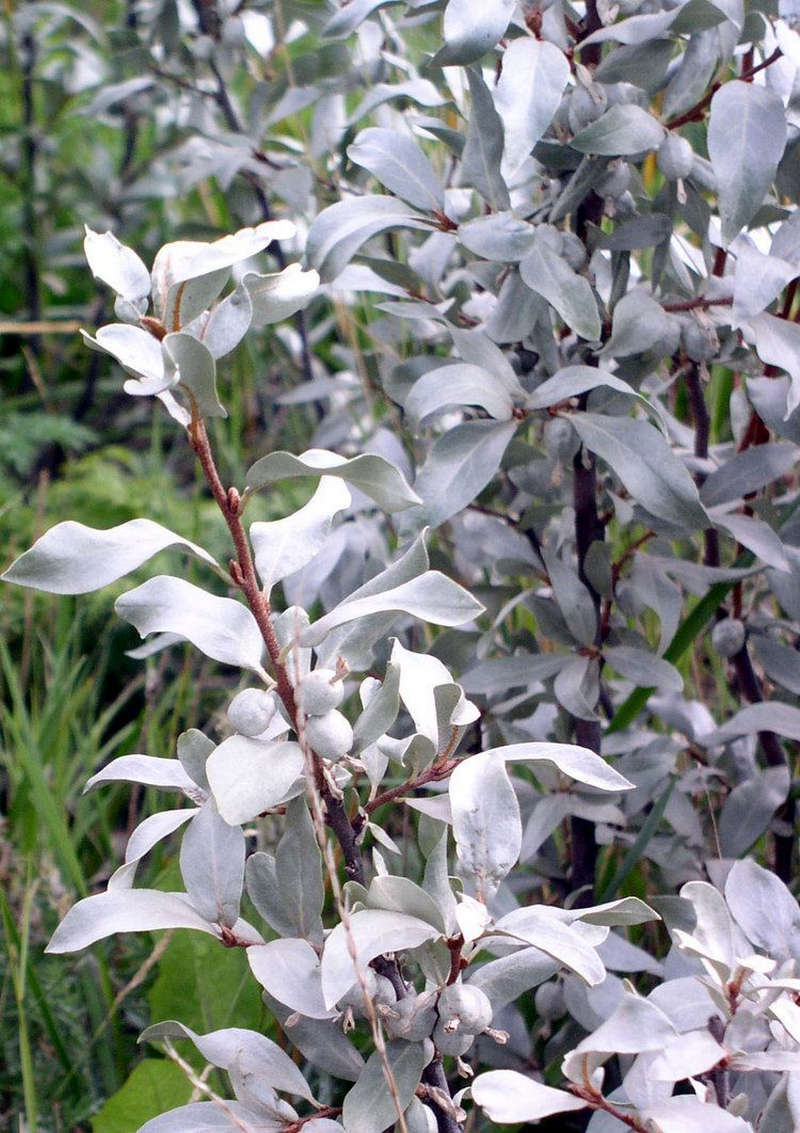

- Euonymus. Its decorativeness lies in the leaves, which have different colors: white, yellow, bronze, purple. The fruits of perennials are distinguished by a bizarre shape, as they ripen, they begin to be painted in scarlet, pink, yellow or burgundy tones.
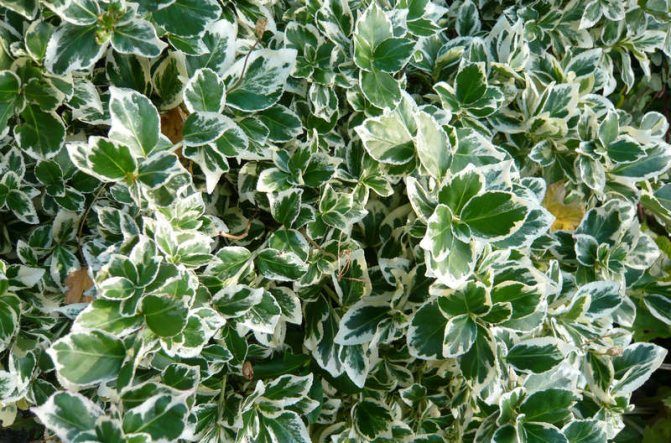

- The cotoneaster is brilliant. It grows to a height of 1-2 meters, has dark green, shiny leaves that turn into dark red, orange, yellow in autumn. The cotoneaster is suitable for sunny or semi-shaded places.


The plant is completely frost and drought resistant. It tolerates pruning and is one of the best deciduous perennial shrubs for continuous hedges.
Decorative, berry and fruit shrubs for the garden and vegetable garden make the site attractive and effective.
Protecting the garden from the wind
Protecting the garden from the winds is a prerequisite for the successful growth of trees, their productivity and longevity.
Garden plantings are arranged simultaneously with the planting of fruit trees, or better - 2-3 years before planting.
Approximate diagrams of the device of garden protection plantations are shown in Figure 8. Along with the planting of garden protection plantations, the site must be fenced off.
Fig. 8. Approximate diagrams of the device of garden protective hedges
In collective gardens, it is inappropriate to set up garden protection plantations in some areas. In this case, the entire garden massif is protected from the winds by planting plants along roads, alleys and borders of the land plot.
Characteristics of trees and shrubs for garden protection plantations
| The most demanding growing conditions | Less demanding on growing conditions | Photophilous | Shade tolerant | Fast growing | Slow growing |
| Oak, maple, elm, ash, linden, fir, jasmine | Birch, pine, lilac, yellow stock, wild rose, honeysuckle, spirea | Birch, pine, poplar, larch, ash, willow, maple, lilac, yellow acacia, honeysuckle, spirea | Linden, oak, elm, spruce, fir, horse chestnut, Siberian cedar, jasmine, thuja | Willow, poplar, ash, birch, spruce, aspen, larch | Linden, oak, elm, chestnut |
The tree species used for horticultural plantations must be hardy in the given climatic conditions, fast-growing and durable, with a fairly dense, but not spreading crown.
Trees and shrubs designed to protect the site should not give excessive root growth and should not have pests and diseases in common with garden plantings.
Recommended plants for gardening plantations
| Trees | Shrubs |
| Oak, elm, linden, maple, birch, ash, fir, poplar, larch | Yellow acacia, lilac, hazel (hazel), honeysuckle, jasmine, wild rose, spirea |
Useful and harmful neighborhood with each other and fruit trees
In order for perennial shrubs to grow and develop well, their mutual influence on each other should be taken into account when planting. This is due to the fact that the proximity of some plants can adversely affect their development.But there is also a favorable mutual influence. The following plants tolerate being close to each other well:
- currants - onions, honeysuckle;
- sea buckthorn - chamomile, oregano;
- gooseberry - apple, pear, apricot.
Competitors:
- irga - chubushnik, barberry, viburnum, lilac, hazelnuts;
- sea buckthorn - all nightshade crops, strawberries.
Among the ornamental perennial shrubs, mono-planted crops should be distinguished. They are distinguished by their rapid growth, the ability to capture new areas and suppress the growth of many plants. These include chubushnik (jasmine), wild rose, lilac, roses, Buldenezh viburnum, barberry, sea buckthorn. Red currant does not tolerate gooseberries, birch, pine, sweet cherry, cherry, plum.
Young garden care
A young garden requires constant and careful maintenance.
In backyard and collective gardens, the aisles are usually used for vegetables, potatoes, sometimes strawberries, currants, gooseberries. Sowing and planting of raspberries, tobacco, sunflower, corn is not allowed in the aisles. These plants have a negative effect on fruit trees.
The row spacing of apple trees can be used for 10-15 years, cherries and plums for 7-8 years. Trunk circles should not be occupied by inter-row crops.
The width of the trunks depends on the age of the plants. In the first two years after planting trees, trunk circles are made up to 2 m wide; in every next two years, the width of the circles is increased by 0.5 m.Starting from the eighth year and further, the width of the near-trunk circles is set at 3.5 m.
During the entire period of tree growth, the trunks are kept in a loose and weed-free state. Loose the soil 3-4 times. They stop loosening at the beginning of August. After each watering or past rains, the soil must be loosened (5 centimeters). Mulch the soil of near-trunk circles with a thin layer of humus, peat.
In autumn, the trunk circles are dug up to 10-15 cm, avoiding damage to the roots, especially near the trunk. In early spring, the trunks are dug up again, but to a shallower depth.
In areas of insufficient moisture, fruit trees should be well watered in the first years after planting. During spring and the first half of summer, trees should be watered three to four times. In dry areas, the amount of watering should be doubled. The watering rate for one planted tree is from two to four buckets, depending on the amount of precipitation. As the tree grows older, it is given more water. Plants are watered along circular grooves along the outer border of the trunk circle. After watering, the grooves are leveled and the soil is mulched. You can read about fertilizing fruit trees and protecting the garden from pests and diseases in the corresponding sections.
The most important work in a young garden is the pruning and shaping of trees. Without pruning, the crown thickens, the branches are elongated, bare, unstable. You need to prune trees during their dormant period (before the buds swell in spring and after leaf fall). In the middle zone of the USSR, pruning should be carried out in the spring. In the fall, only black and red currant bushes can be cut.
It is necessary to form trees in the garden according to the system started in the nursery. In our nurseries, fruit plants are formed according to the tiered (five-branch) and sparse-tiered systems. The tiered system is the most widespread and simplest to implement.
Berry and fruit shrubs for the garden and vegetable garden
A garden plot cannot do without berry and fruit bushes. Most often, summer residents grow the following plants that bear fruit:
- Raspberries. This perennial shrub has red, yellow and purple-black berries. There are early varieties, medium and late ripening. It adapts well to any conditions, but is characterized by a low yield.
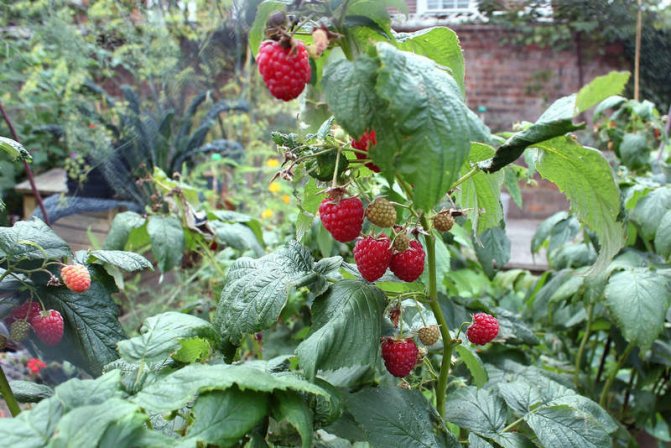

The most popular variety is remontant. Planted in spring or autumn. Raspberries can grow in the sun or in partial shade, they are resistant to frost, droughts, and do not impose increased demands on the soil. - Gooseberry.It is often called Russian cherry plum. A good harvest can be harvested from the bushes. The plant prefers to grow in lighted places and does not tolerate shade and strong moisture.
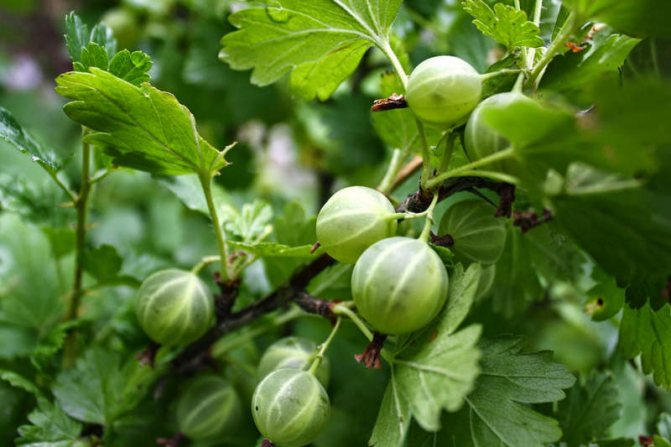

The berries are red-brown, yellow or green. Planted in September. - Blackberry. Outwardly, it resembles black raspberries. The berries taste a little sour.
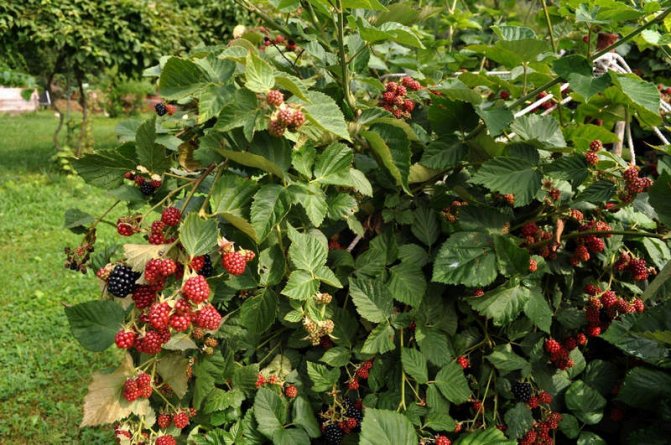

The most common variety is upright. To get a rich harvest of this perennial shrub, you need to fertilize the land. Water abundantly during the fruiting period. The plant grows well in dry, light and sandy soil. It should be borne in mind that it grows strongly, you need to control its growth. - Honeysuckle. Berries contain selenium, which prevents aging processes in the body, as well as a large amount of vitamins. The plant blooms beautifully, therefore it is often used for decorative purposes.
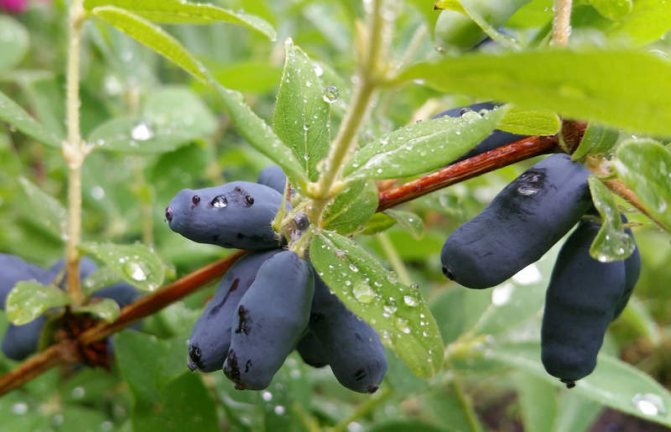

The berries taste a little bitter. This perennial shrub does not like shade, so it is planted in sunny areas. Planted in spring and autumn. - Currant. Berries have useful properties and taste. A perennial shrub does not require careful maintenance, and a rich harvest can be harvested from the bushes.
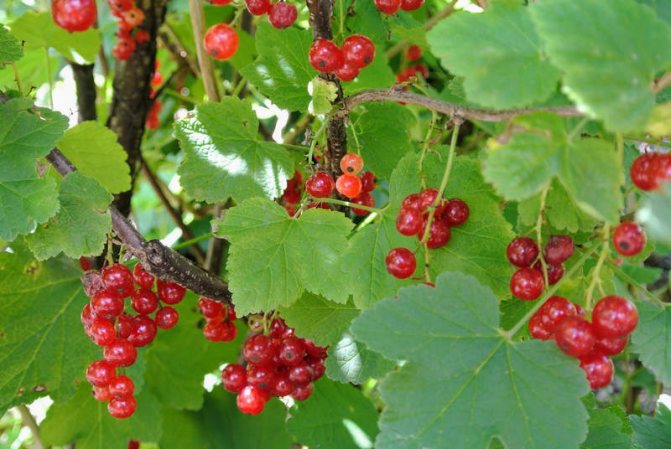

Often, several varieties of currants are grown in garden plots: black, red, white. The plant tolerates severe frosts well. There is a rare variety - golden currant, the berries of which are red, yellow or black. Currant bushes grow best on humus, medium-heavy, sandy and loamy soil with sufficient moisture. - Blueberry. If you take good care of it, you can get a good harvest.


Outwardly, the berries resemble blueberries. This perennial shrub makes special demands on the soil, therefore the necessary fertile conditions are created for it. It is recommended to plant blueberries in groups because they need another shrub to pollinate. This berry shrub can grow in shady areas. - Sea buckthorn. Bushes are often found in garden plots. Berries are often used for medicinal purposes. Sea buckthorn oil is especially appreciated.
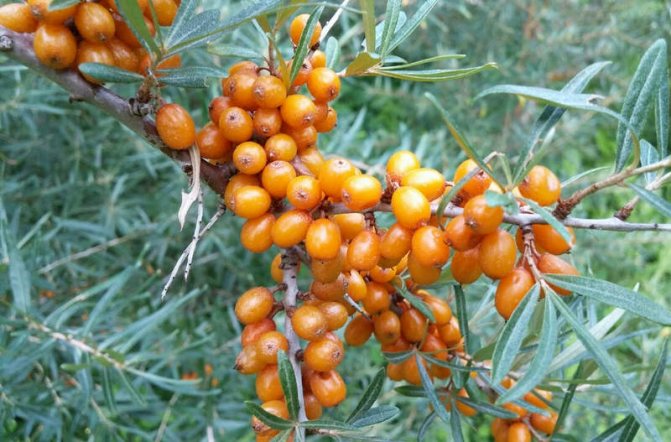

There are varieties of early, middle and late ripening. The soil must be covered for the winter, because this perennial shrub does not tolerate severe cold. - Irga. The berries of the plant are rich in vitamins, and they taste like cherries. Able to tolerate frost well.
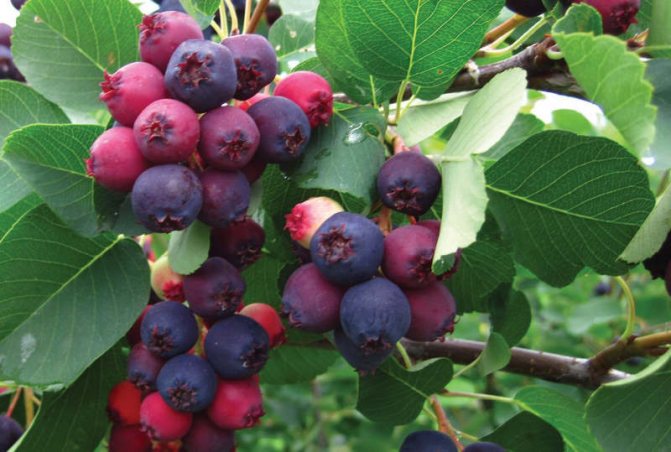

Perennial shrubs do not require special care, but they love to be abundantly moisturized. - Lingonberry is garden. It is a short, perennial shrub with dark red berries. Fruits are firm, medium in size and slightly sour. The plant is not demanding on the soil.


- Blueberries. This is also a short perennial shrub with short petiolate leaves. The berries are juicy and large in blue-black color.
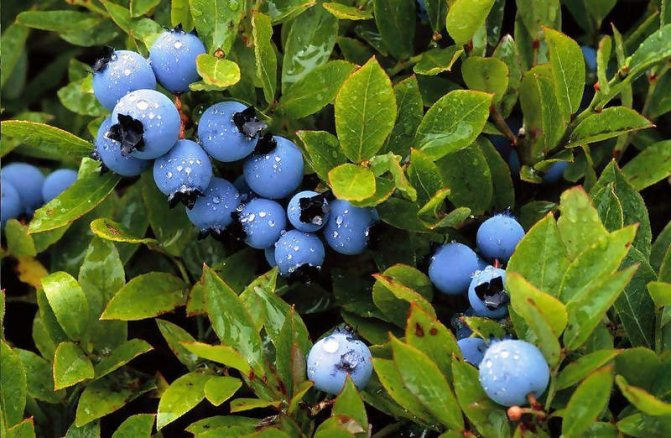

The pulp inside is purple. The fruits are rich in vitamins and nutrients. - Blackthorn (prickly plum). The branches of this perennial shrub are covered with many sharp thorns. Fruits are black and blue in color, round in shape. They are rich in nutrients.
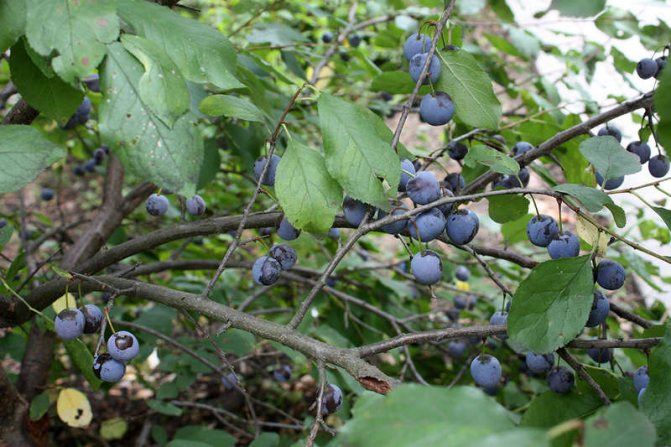

By planting several varieties of berry perennial shrubs, you can create a variety of fruit plants in the garden.
Caring for a fruiting garden
Soil care
The soil on the near-trunk circles of fruit trees, as well as in ordinary strips, in early spring and autumn, after leaf fall, is dug up with shovels or garden pitchforks, preventing damage and exposure of the root system. In early spring, before digging, organic and mineral fertilizers are applied.
Throughout the season, with the germination of weeds and the compaction of the soil after the last rains, loosening is carried out with hoes. It is recommended to mulch (shade) the trunks after loosening with manure, humus, peat, grass.
Watering
With a lack of moisture in the soil, watering the garden is a necessary measure not only in the southern regions, but also in the central zone of the USSR. Watering greatly contributes to the development of trees and an increase in their productivity.
Watering terms: first - in spring, before budding on trees; the second — 12-15 days after the end of flowering; the third - 15-20 days before harvest. In the low-rainfall period, watering is done in the fall. When watering, it is necessary to moisten the soil layer to a depth of 0.8-1 m, that is, to the depth of distribution of the active part of the root system of fruit trees. For stone fruit and berry trees, this layer will be slightly smaller.
Trees are watered in several ways. You can water in circular grooves - grooves arranged around the circumference of the trunk circle, or in holes punched with a crowbar. After the water is absorbed and the soil dries out somewhat, it must be loosened and shaded with manure, humus, peat.
Thinning the crown of the tree
As the crown of the tree grows, it thickens, the branches in it dry up and die off. In the thickened crown, the branches and leaves are poorly illuminated by the sun, the fruits ripen poorly and are not sufficiently colored, pests and diseases in the thickened crown cause significant damage.
Crown care during this period consists in thinning - removing unnecessary branches. Thinning of the crown is carried out in the fall, after leaf fall, or in early spring, before the start of sap flow on the trees. Thinning is as follows. First, cut out all the dried up branches, diseased and damaged by frost. Then the old branches that have stopped bearing fruit are removed. Broken branches are pruned below the break point, to healthy wood. If two branches interfere with each other's development, one of them - less valuable - is removed or shortened. Cut out. also branches growing inside the crown and thickening it. Unnecessary "fatty" shoots (tops) are also cut out.
The cut branches are removed from the garden and burned. The branches are cut off with sharp garden saws, the edges of the wound are smoothly cleaned with a garden knife and coated with garden putty or painted over with ocher on natural linseed oil.
Branch cutting technique
A circular influx at the base of a branch or one-year growth (shoot) is conventionally called a "ring". A correct cut of a branch is considered to be when its area is the smallest (i.e., round), without leaving a hemp; only a slight protrusion should remain on the cut on its lower side (Fig. 9, 10).
Fig. 9. Cutting branches "into a ring": a and b - incorrect, c - correct
If a branch is cut below the "ring" or a stump remains after cutting, such wounds, as a rule, hardly heal, which is often the reason for the formation of hollows in trees.
Fig. 10. Healed wound after the correct cut of the branch
The shoots are shortened above the bud, from its opposite side. The upper part of the cut should be at the level of the apex of the kidney, and the lower - at the level of its base (Fig. 11). Leaving the stumps above the bud is also unacceptable.
Fig. 11. Cutting off the branch above the bud: a - correct, b and c - incorrect
How to cut a thick branch
With the usual pruning technique, a thick branch cannot be cut off. Often, this will cause the branches to split, causing serious damage to the tree (Figure 13). To avoid this, thick branches are cut like this.
Fig. 13. Peeling off the bark in case of improper cutting of a branch
Departing from the base of the branch by 1 m, make a cut from the bottom, tried on half the thickness of the branch. The second cut is made from above, departing from the first by 15-20 cm, after which the branch is split off. The remaining part of the branch is removed with a saw, as when cutting thin branches (Fig. 12).
Fig. 12. Sawing off thick branches of a tree: a - the first sawing the branches from below; b - upper incision; c - branch break off; d - sawing off "into a ring" of the remaining part of the break off branch
Pinning the split branches
Under the weight of the harvest on the tree, especially with incorrect or inadequate installation of supports, as well as with strong winds, branches sometimes break off and split.
If you do not take timely measures, the places of the splits can lead to the formation of hollows, disease of the branches.
Two split thick branches can be firmly held together, after which they grow together completely or partially and continue to bear fruit.
One of the most reliable ways is to fasten the branches with two pieces of wood. The wounded areas are preliminarily slightly cleaned with a sharp garden knife, then the branches are brought together and tied with thick wire or fastened with bolts. It is advisable to install a support under the broken off branch.
In all cases, it is necessary to put pieces of matting or burlap under the bars and wire in order to avoid damaging the healthy bark of the tree (Fig. 14).
Fig. 14. Method of fastening split branches
Tree trunk care
A healthy and strong stem is a guarantee of the longevity of the fruit tree. Many garden pests hibernate in the cracks of the dead bark of the trunk. In early spring, or better in late autumn, the shoots growing on it are cut out on the stem "on a ring", the stem is cleaned with scrapers from dead bark, collecting it on a matting, burlap spread on the ground, and then burned.
The stem is cleaned carefully, avoiding mechanical damage to the healthy bark. After cleaning the stem and the base of the thick branches are coated with a solution of freshly slaked lime (1.5-2 kg of lime per bucket of water).
Summer whitewashing of boles is of little use. It is very useful in the fall not only to whitewash the stems and the base of the branches with lime, but also to spray the whole tree with a lime solution.
Whitewashing serves not only as a means of combating pests and diseases, but also protects trees from early spring (March) sunburn of the bark.
Hollow tree treatment
Hollows on fruit trees in most cases are formed from branch splits, floors and improper pruning.
Hollow trees are short-lived. Timely treatment of hollows lengthens the life of the tree and its fruiting.
Hollows are closed up in early spring, and preferably in late autumn. The hollows are preliminarily cleaned of dead wood, disinfected with a 3% solution of copper sulfate (300 g per bucket of water) or 5% iron sulfate (500 g per bucket of water). Copper sulfate can be replaced with carbolic acid or lysol of 3% concentration.
Hollows of large sizes are filled with crushed stone or broken brick, tamped, and then poured with a thick solution consisting of a mixture of sand, lime and cement in a ratio of 6: 1: 1.
In the hollows of small diameter, but deep, wooden bushings are hammered, which are covered with garden putty on top.
Bridging vaccination
With circular damage to the bark of boles by mice, the trees are inevitably doomed to death. Although such trees grow from spring for a certain period of time, but later, at the end of summer, they inevitably die. They can be saved only by timely grafting with a "bridge" in early spring (at the beginning of sap flow), when the bark freely lags behind the wood. Grafting is done with cuttings harvested in autumn or early spring, before the buds swell. At both ends of each cutting, oblique cuts are made 4-5 cm long. Then the cuttings are inserted into the upper and lower T-shaped cuts of the bark. The grafting site is tied tightly and covered with garden putty (Fig. 15). After two weeks, the harness is loosened, and at the end of summer it is removed.
Fig. 15. Grafting with a "bridge" of trees damaged by rodents: on the left - cuttings prepared for grafting; on the right - the cuttings are inserted under the bark and tied
Rejuvenating fruit trees
Medium-aged trees with overly sparse crowns, bare branches and dead tops cannot give a high yield. After rejuvenation, such trees in 3-4 years restore their growth and significantly lengthen the period of fruiting. Rejuvenation is carried out in the following way.
In the spring, before bud break, trees intended for rejuvenation are cut by sawing off the main skeletal branches at a distance of 1-1.25 m from their base, the wounds are cleaned with a garden knife and covered with garden putty.
At the ends of the cut branches in the same year, several shoots grow, of which 3-4 are left; the rest are pinched over the 5-6th leaf, and in the fall they are cut off at the base.
Rejuvenation is recommended for two years. In the first year, half of all branches are rejuvenated, and the next - the rest (Fig. 16).
Fig. 16. Fruit tree after rejuvenation
Re-grafting trees
In household plots, you can sometimes find wild trees, as well as trees that give very bad fruits in terms of taste. Such trees can be grafted with the best cultivated varieties, and after 3-4 years they will bear fruit of the same variety that was grafted into the crown.
It is also possible to have several different varieties by grafting on the same tree.
In the orchard of the All-Union Agricultural Exhibition, two trees grow, each of which is grafted with several dozen different varieties of apple trees.
It is advisable to re-graft trees (apple, pear) no older than 25-30 years.
Re-grafting technique.
In the spring, at the beginning of sap flow, when the bark is easily separated from the wood, thick branches of the tree are cut off in the same way as during rejuvenation, at a distance of 1-1.25 m from their base.
The ends of the slices are smoothly cleaned with a sharp garden knife.
At the ends of the branches, longitudinal cuts are made in the bark 3-4 cm long, into which cuttings (3-4, depending on the thickness of the branches) of the grafted variety are inserted. An oblique cut is made on the handle, as in the "bridge" grafting. Each grafted cuttings should have 3-4 buds.
The grafting sites are tied tightly and covered with garden putty. The cut surface of the branch is also coated with putty. Cuttings for grafting are prepared in autumn or early spring before the start of sap flow.
Inoculation can also be done in the standard and root shoots and in separate branches of different thicknesses (Fig. 17). Thick branches are grafted with cuttings, and thin branches are also grafted by means of budding - grafting with an "eye" (kidney).
Fig. 17. Re-grafting of a fruit tree: a - methods of grafting: b - cuttings prepared for grafting under the bark of a sawn branch; c - development of shoots from grafted cuttings
Birds sometimes sit on grafted cuttings, the cuttings can break off or move in places of grafting. To prevent this, an arch of twigs is tied to the grafting site, to which the growing shoots can subsequently be tied to avoid breaking them off by the wind (Fig. 18).
Fig. 18. A bow of twigs, tied to the grafting site of cuttings
Transplanting mature trees
Mature trees are transplanted with a lump of soil with a diameter of: for trees aged 7-10 years - 1.25 m; at the age of 10-15 years - 1.5 m. The height of the soil coma should be 60-70 cm. The roots encountered during the digging are chopped off, and the ends are smoothly cleaned with a sharp garden knife. For long-distance transportation or with very loose soil, the lump is sheathed with boards (Fig. 19). The trees are dug up in late autumn or early spring. The dug trees can be transported even in winter at temperatures not lower than -6 °. For planting, pits are prepared with a size corresponding to the size of the soil clod prepared for transplanting a tree.
Fig. 19. A tree prepared for transportation (the branches are wrapped in matting, and the roots with a lump of soil are sheathed with boards)
Under the bottom of the coma, nutrient soil is "knocked out"; it is filled with the void around the coma.
Caring for the transplanted tree.
The tree is strengthened with stretch marks (thick wire) (Fig. 20). The main branches are shortened by 1/3 the length. The stem and the base of the branches are tied with moss, matting, burlap. Within 20-30 days, the strapping is systematically moistened with water or sprayed with a lime solution. In dry times, trees are watered abundantly. They fight pests and diseases.
Fig. 20. Strengthening the transplanted tree with guy wires
Installation of supports under the branches of trees with harvest
Branches with a harvest of fruits require the mandatory installation of backwaters.The absence of backwaters or a delay in their installation often leads to splits and breaks of branches, to a loss of yield from the action of the wind and the heaviness of the fruit.
The installation of backwaters is started when the fruits reach about 3 cm in diameter, and the branches deviate from their original position under the weight of the fruits
The number of backwaters depends on the amount of harvest on the tree.
Under each branch, carrying 8-10 kg of fruit, it is supposed to install one support.
Peeled from the bark, pointed at the bottom and having a fork on top, the support is driven into the ground in an upright position. To avoid damage to the branches, pieces of matting, burlap are placed on the fork. After harvesting, the supports are removed.
Fruit and berry "crop rotation"
Most summer residents know that in the garden it is necessary to observe crop rotation, that is, alternate vegetables in space and time. In other words, you cannot plant the same crop from year to year in the same place. Few people know that the same rule must be taken into account in an orchard.
Meanwhile, you cannot plant new trees exactly in the same place! At least 1.5 meters must be retreated from the previous trunk. At the same time, in place of pome crops (apple, pear, quince, mountain ash), even taking into account the indentation, only stone fruits (cherries, cherries, plums, cherry plums, apricots, peaches) or berries can be planted. And vice versa.
This is due to the so-called overwork of the soil. Over the long life of a fruit tree or berry shrub, a shortage of certain nutrients is formed in the zone of its roots, harmful microorganisms accumulate. After the trunk of an old or dead tree is uprooted, its roots begin to actively decompose and the number of microbes in the ground increases sharply. But since they are specific to each group of cultures, they must be alternated.
Protecting the garden from spring frosts
Spring frosts are dangerous for gardens when trees are in bloom. They destroy the flowers, and therefore the harvest. According to long-term observations, in the middle zone of the USSR, the latest frost occurs around June 6.
The Central Institute of Weather Forecasts warns about the approach of frost by radio.
The simplest way to combat frost during flowering trees is to fumigate the garden by burning heaps of manure, peat, and garbage (Fig. 21).
Fig. 21. Diagram of the device of the smoke heap: a - wood chips, brushwood, firewood, straw; b - wet combustible material (manure, etc.); c - soil layer; d - stakes for regulating the combustion of a smoke heap
Heaps are ignited with a sharp drop in temperature to +1, + 2 °, and smoke ends 1-2 hours after sunrise, but not earlier, in order to avoid rapid thawing of frozen flowers.
Smoke conditions: the heap should be smoking, not burning, which is achieved by covering the heap with a layer of earth in the places where the flames appear. In case of attenuation of the heap, it is loosened with a pitchfork and the stakes are raised. Smoke bombs are most convenient for smoking a garden.
One of the measures to reduce the effect of frost is placing barrels of water under the trees, as well as spraying the soil under the trees and the trees themselves with water.
Of great importance is the coverage of the trunks with a layer of manure, peat, sawdust. This slows down the melting of snow and delays bud opening. As a result, the trees “go away” from freezing.
Trees, whitewashed with lime in the fall, start growing a little later in the spring, and the flowers often do not fall under frost.
Determination of the possibility of the onset of spring frosts.
One of the signs of the onset of frost is a sharp drop in temperature from 8-9 pm (on the eve of frost) in calm, calm weather and cloudless nights.
The onset of freezing is also determined by a device consisting of two thermometers: dry and wet. The result of the readings of both thermometers is determined according to the table shown in Figure 22.
Fig. 22. Auxiliary table for determining the possibility of frost onset
Dry bulb readings (in degrees) are indicated in the table in the left vertical column, and wet bulb - in the upper horizontal one. The intersection of the temperature readings of both thermometers determines the possibility of freezing.
Preparing trees for wintering
Fruit trees that are not properly cared for tend to freeze more easily.
In order to avoid frost damage to the root system of trees, as well as their boles and branches, it is necessary to: timely process and fertilize the soil in the gardens;
fight pests and diseases;
prevent damage to the branches and trunk, as well as the root system;
in dry autumn, water the trees before winter;
tie the crowns of young trees for the winter, and then tie them with spruce branches together with the stem;
spud the stems of young trees in the fall with soil to a height of 25-30 cm;
also tie the stems and bases of skeletal branches of fruit-bearing trees with spruce branches and spud trees;
cover the trunks with a layer of manure, peat, sawdust to prevent soil freezing;
in winter, accumulate snow on the near-trunk circles and pile up the boles with it.
Fig. 23. Tying the trunk of a tree with matting, and then tar paper to protect against rodents
Site plan and schemes
When a place for the garden is chosen, it is necessary to develop a site plan and choose a planting scheme. Each piece of land must be rationally used so that there is no room left for the growth of weeds.
There are four main patterns that are used when landing:
- Square (see photo). The scheme is the most common, since it is convenient to care for plants when using it. According to this plan, all trees are planted in even rows, and the distance between them depends on the type of culture. For example, pears and apple trees should be 4-5 meters apart. And for plums and cherries, it is necessary to maintain an interval of 3 meters. To avoid leaving areas empty, shrubs or dwarf fruit trees can be planted between the trees. The square pattern is more suitable for apple and pear trees.
- Chess (see photo). This planting pattern is excellent, in which a relatively small crown grows. A checkerboard planting is optimal if the garden is located on a slope. The illumination with this scheme is very good, the crowns do not interfere with each other and do not form a shadow. A checkerboard planting implies compliance with a certain distance: between trees - 4 meters, and between rows - 5 meters. Plums, apple trees, peaches and pears can be planted.
- Triangular (see photo). Placing plants according to this pattern, it is necessary to calculate the correct distance between them. To do this, you must adhere to the rule of doubling the indicator. For example, if the crown height is four meters, then the distance between trees on all sides should be at least eight meters. The triangular pattern can grow 15% more trees than the previous two options. You can plant cherries, apples, apricots, peaches, plums according to this plan.
- Horizontal. Planting trees according to this scheme is only possible if the garden is located on a hill. The plantings are planted in the ground along horizontal lines. In this case, it is worth observing the distance: there should be three meters between the trees, and five between the rows. Any fruit trees and shrubs can be planted in a horizontal pattern. All plants will receive a sufficient amount of light.
If there is both a vegetable garden and a garden with fruit trees and shrubs on the site, it is recommended to visually divide the territory into three zones. The first should contain vegetable crops, the second - shrubs, and the third - directly fruit trees. This arrangement allows you to most competently distribute sunlight between all plants.

